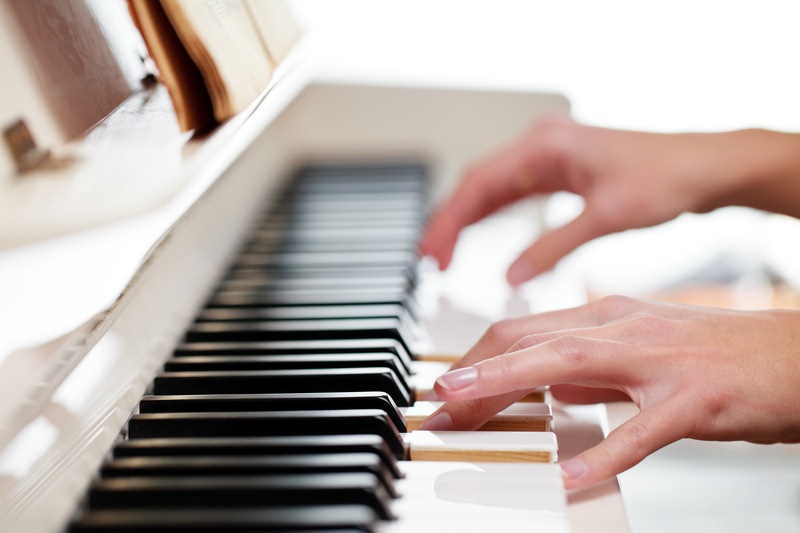Try Our 6 Favorite Piano Playing Warmups

Although piano warmups can seem monotonous and unnecessary at times, they can be quite beneficial and essential regardless of how advanced a piano player you are. Warming up can help you improve your skills, build finger dexterity and strength, increase wrist flexibility, and exercise your brain.
Here is a list of some of our favorite piano warmups that can help you become a better pianist:
Warm Your Hands
Whether you choose to rub your hands together, stretch them out or hold them up against something that’s giving off heat, warming up your hands is very important and helpful before you start playing.
Your muscles and tendons can provide better flexibility when they are warm, and you are less likely to make mistakes, as it is easier to move around warmer hands as opposed to cold fingers.
Hand Stretch
In addition to warming up your hands, a quick hand stretch is always helpful as well. Using one hand, you pull back on another until you feel a stretch in your palm and wrist. You can hold that motion for a few seconds before repeating it on your other hand. This will eliminate any stiffness you might be feeling in your hands and make them ready to move in a more loose and flexible manner.
Hanon
The Hanon Exercises is a compilation of sixty exercises that are meant to improve a pianist’s finger strength, dexterity, and wrist flexibility. They can be used as a warmup exercise before, during or after practice and are suggested for most level of players. Titled as The Virtuoso Pianist by Charles-Louis Hanon and published in 1873, this compilation of exercises can do wonders for a pianist’s finger strength.
Scales
When it comes to familiarizing yourself with key signatures, scales are an essential part of your piano warmups. Along with increasing finger dexterity and wrist flexibility, playing your scales up and down is a great exercise for your brain as well. Playing your scales plays an important role in helping your fingers and brain coordinate sharps and flats to be able to get the right scale in the appropriate key signature. Playing in a contrary motion allows for your left and right fingers to mirror each other and play the same fingering throughout. Parallel motions on the other hand allow the fingers of each hand to play independently. This warmup is helpful for beginners as well as advanced players and can go a long way in helping train your brain.
Improvisation
Trying a little improvisation can help make your warmup exercises less monotonous and a bit more exciting. Using the melody lines from the scales and key signatures that you know, you can start with a chord progression and just take it from there as your fingers keep going. Improvisation can also work with randomly selected notes or something you start yourself from scratch.
Arpeggios
Arpeggios are of the best exercises for a pianist looking to improve wrist flexibility. They help familiarize a pianist with key signatures and are played up and down the piano, at least four octaves at a time. A pianist must make sure that while playing arpeggios, you loosen up your wrist as much as possible.
Along with these warmups there are several other exercises that can help a pianist play better by increasing their finger strength and wrist flexibility. Playing the piano regularly is beneficial for your mental health and helps sharpen your concentration and focus, so make sure to keep playing regularly if you have one of these wonderful instruments at home! And if you ever need your beloved piano transported, make sure to call the professional piano movers at Modern Piano Moving who will help make it a seamless and smooth process!
Bookmark & Share
User Comments
Be the first to comment on this post below!
Previous Article
Most Popular Articles
- How Much Does It Cost to Move a Piano Long Distance?
- How Heavy Is A Grand Piano?
- Easy Pop Songs to Play on the Piano
- The Best Spots for Your Piano
- 10 Reasons to Hire a Professional Piano Moving Company
- Mistakes to Avoid When Moving a Piano
- How to Restore Yellow Piano Keys
- What to Do with Your Unused Piano



